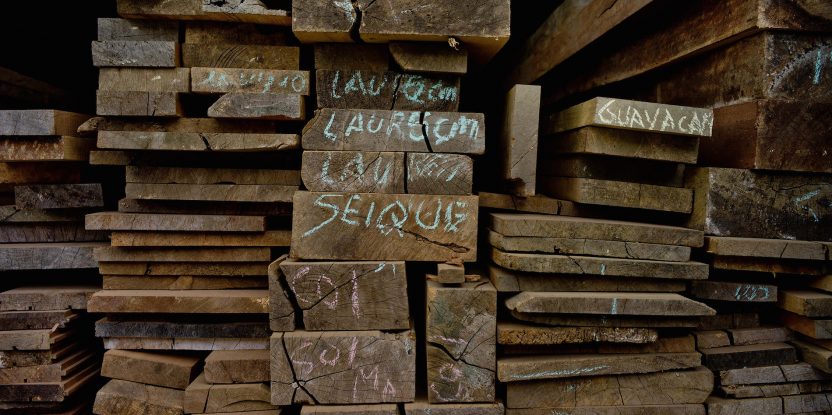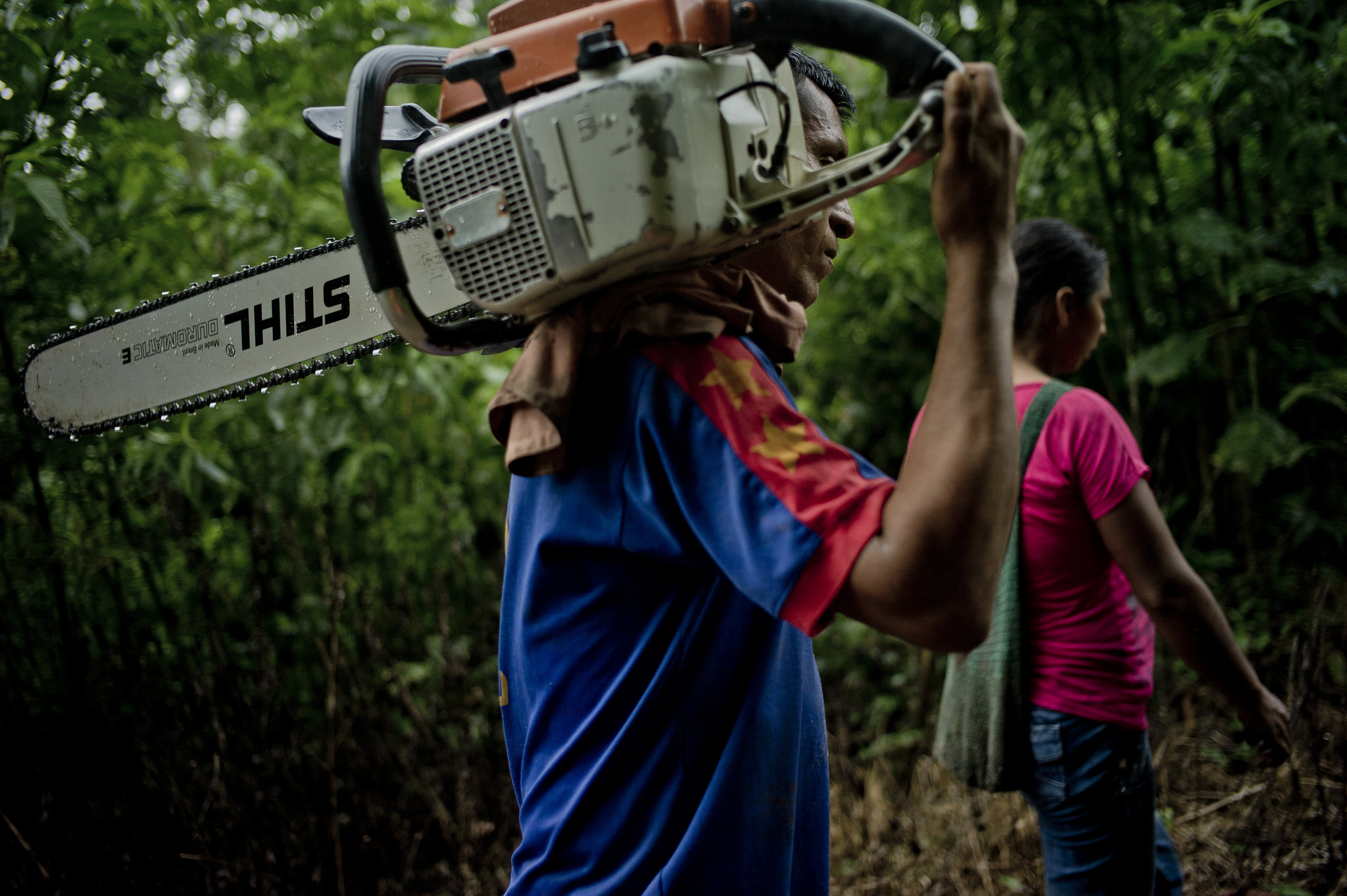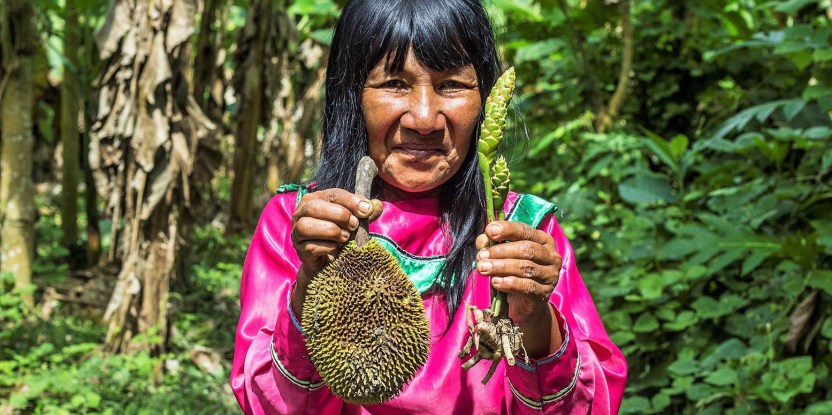Nearly two decades ago, western Amazonian countries began implementing new forest policies to help communities and small producers manage their forests more sustainably. Nevertheless, much of the timber harvesting in that area is still illegal.
What further steps could countries take to help protect forests and the people who depend on them for a livelihood, while reducing informal or illegal timber extraction by communities and smallholders?
Scientists from the Indonesia-based Center for International Forestry Research (CIFOR) are finding some answers through research on forest governance reforms and sustainable forest management in Bolivia, Ecuador and Peru. Their studies point to three main challenges.
“The first is to provide small producers with incentives, including financing, so they can manage their forests in ways that are better adapted to their local contexts,” says Pablo Pacheco, principal scientist at CIFOR, who coordinated the research.
“The second is to implement effective monitoring, along the timber supply chain. And the third is to make the timber markets more transparent and to distribute benefits more equitably along the value chain,” he says.
As much as 80% of the timber extracted from the Amazonian forests of Bolivia, Ecuador and Peru is sold in domestic markets. The complex market chains include small producers, concession holders, chainsaw operators, sawmill operators, transport workers, local intermediaries and brokers.
But many of these players, and the complex relationships among them, are not considered in regulations and policies.
“Forestry regulations and related norms also often fail to reflect the diverse ways in which smallholders and communities use their forest resources,” Pacheco says.
Considering smallholders
In the western Amazon, timber generally is not the main source of income for most smallholders and communities. Instead, it serves as a sort of savings account on which they can draw if they need small amounts of cash for health emergencies, school supplies or other necessities.
Reforms implemented in the 1990s and 2000s were meant to make it easier for smallholders and communities to participate legally in timber markets. But those changes did not take into account the economics of small-scale production or the practices of smallholders and communities that harvest and sell timber, the researchers say.
In Bolivia, extensive efforts were made to adapt forestry regulations to small-scale production and improve tenure for smallholders and communities, but they fell short, says Walter Cano, who led the CIFOR study in that country.
“Smallholders currently are not considered in forestry norms to a degree consistent with their use of forest resources,” he says.
Changes to Ecuador’s regulations were aimed at simplifying requirements to help smallholders develop forest management plans and obtain permits to harvest timber.
Developing such plans is costly, however, and they generally are drafted by experts who focus on larger-scale timber production, says Elena Mejía, who led the CIFOR study in Ecuador and Peru.
“Smallholders do not always want to extract large amounts of timber. They consider forestry only a sporadic and complementary activity,” Mejía says. “They also tend not to reinvest their profits in their forests.”
When harvesting timber legally is too expensive for smallholders or communities, or when regulations require practices that are too cumbersome, they have little incentive to harvest legally and may turn to informal or illegal practices.
Meanwhile, domestic demand for timber and lumber is growing in the three countries studied, and intermediaries meet it by buying and selling both legal and illegal timber, often through informal agreements with smallholders or customers.
“As a result, the various people involved in timber extraction are simultaneously legal and illegal, to varying degrees that change depending on the time and place,” Pacheco says.
Providing incentives
Providing stronger incentives for legal production, improving monitoring and giving communities and smallholders more information about markets are critical steps for addressing the problem.
Countries could take a major step by offering greater access to credit for smallholders and others in the informal market chain, who currently depend on intermediaries to advance them the money for timber harvesting. The intermediaries then take part of the timber in payment, often on terms that are disadvantageous to the smallholder.
Nevertheless, intermediaries play an important role in the small-scale forestry market chain, Pacheco says. They buy timber from various smallholders, then sell to customers who need larger volumes, serving as a crucial link between sellers and buyers.
“They could therefore play a key role in any system that is created to make credit on better terms available to small-scale producers,” Pacheco says. Streamlining procedures for obtaining permits to harvest timber and accepting small-scale producers’ practices, as long as they are sustainable, would also help, he adds.
Monitoring and enforcement of regulations could also be targeted more effectively, the researchers say.
Studies show that smallholders sell to intermediaries who sell to other intermediaries who sell to larger buyers.
“Ultimately, just a few large players tend to dominate the market,” Mejía says. “Our studies indicate that it could be more effective for enforcement to focus on sawmills and other large purchasers, instead of focusing on those who harvest or transport the timber.”
It is also important for countries to monitor the flow of timber products across national borders, the researchers say. In the Amazon, those borders are often poorly patrolled, making it easier for timber extracted illegally to be moved from one country to another.
CIFOR’s research also points to steps that could be taken to make domestic timber markets more transparent and more efficient for smallholders and communities.
“One of the most efficient ways to do this would be to build information systems that gather price information and disseminate it to small-scale producers and others in the market chain,” Pacheco says.
Giving smallholders and communities access to more complete, better and more timely information about the prices of different species and products would enable them to negotiate prices and contract conditions more effectively with intermediaries, and allow intermediaries to deal on better terms with buyers, potentially increasing their share of income from their forest resources, he says.
The three-country study is providing information that could help policy makers take into account the complexity of the smallholder and community forestry in the western Amazon, Pacheco says.
“With additional research we can monitor the results of specific policy changes and assess what it works and what doesn’t,” he says. “Countries can then use that information to fine-tune their regulations.”
This research was conducted as part of the project, “Emerging countries in transition to a green economy: Will it make the difference for forests and people?”. This collaborative program aims to enhance the management and use of forests, agroforestry and tree genetic resources across the landscape, from forests to farms.
We want you to share Forests News content, which is licensed under Creative Commons Attribution-NonCommercial-ShareAlike 4.0 International (CC BY-NC-SA 4.0). This means you are free to redistribute our material for non-commercial purposes. All we ask is that you give Forests News appropriate credit and link to the original Forests News content, indicate if changes were made, and distribute your contributions under the same Creative Commons license. You must notify Forests News if you repost, reprint or reuse our materials by contacting forestsnews@cifor-icraf.org.


